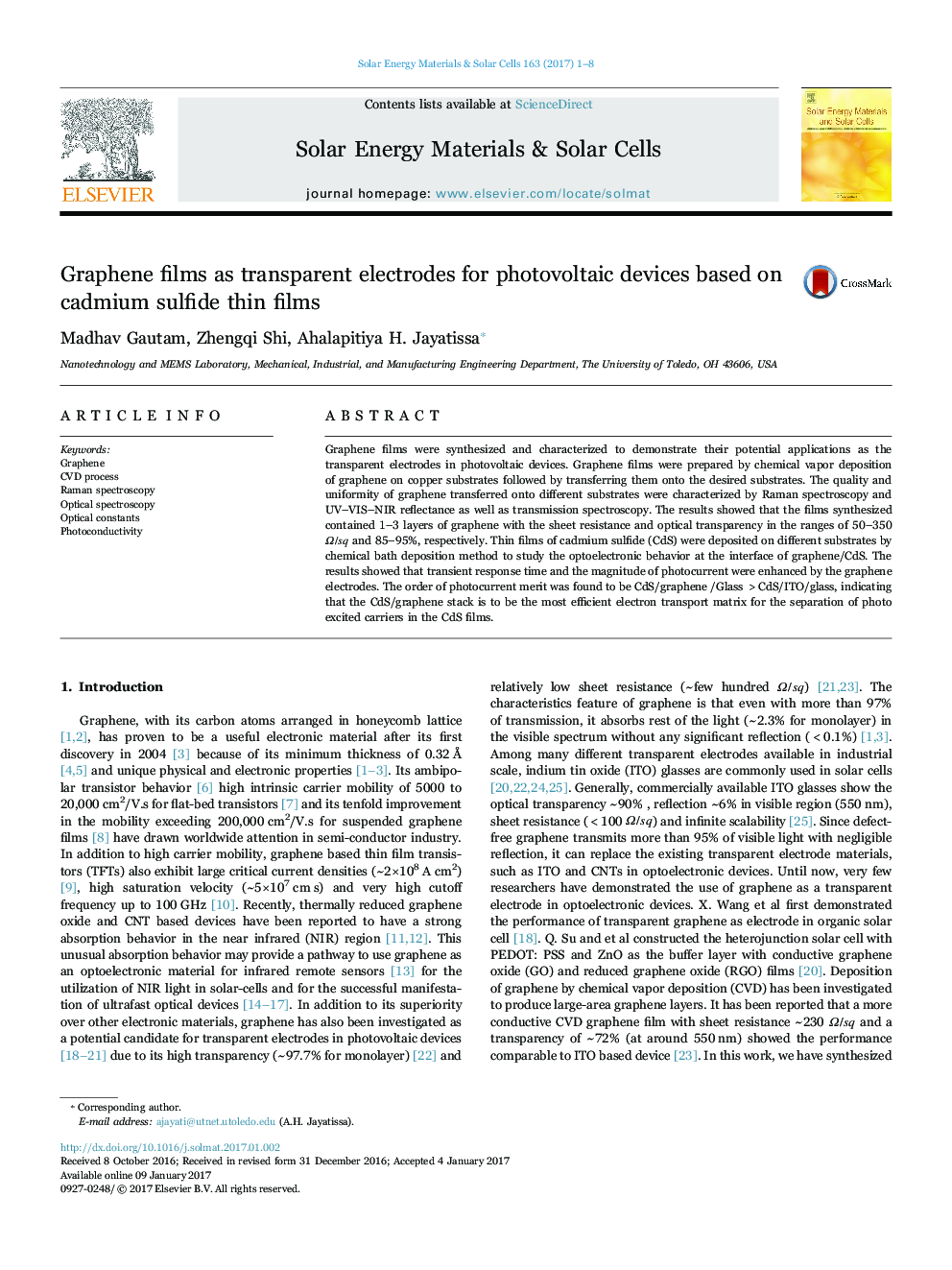| Article ID | Journal | Published Year | Pages | File Type |
|---|---|---|---|---|
| 6457154 | Solar Energy Materials and Solar Cells | 2017 | 8 Pages |
•Graphene films were synthesized and characterized for their potential applications as the transparent electrodes in opto-electronic devices.•The results showed that the graphene synthesized by this method contained 1-3 layers.•Sheet resistance and optical transmittance were in 50 – 350 Ω/sq and 85 – 95%, respectively.•Photocurrent of CdS was enhanced by the graphene films.•The order of photocurrent merit can be described as CdS/Gr > CdS/ITO.
Graphene films were synthesized and characterized to demonstrate their potential applications as the transparent electrodes in photovoltaic devices. Graphene films were prepared by chemical vapor deposition of graphene on copper substrates followed by transferring them onto the desired substrates. The quality and uniformity of graphene transferred onto different substrates were characterized by Raman spectroscopy and UV–VIS–NIR reflectance as well as transmission spectroscopy. The results showed that the films synthesized contained 1–3 layers of graphene with the sheet resistance and optical transparency in the ranges of 50–350 Ω/sqΩ/sq and 85–95%, respectively. Thin films of cadmium sulfide (CdS) were deposited on different substrates by chemical bath deposition method to study the optoelectronic behavior at the interface of graphene/CdS. The results showed that transient response time and the magnitude of photocurrent were enhanced by the graphene electrodes. The order of photocurrent merit was found to be CdS/graphene /Glass >CdS/ITO/glass, indicating that the CdS/graphene stack is to be the most efficient electron transport matrix for the separation of photo excited carriers in the CdS films.
